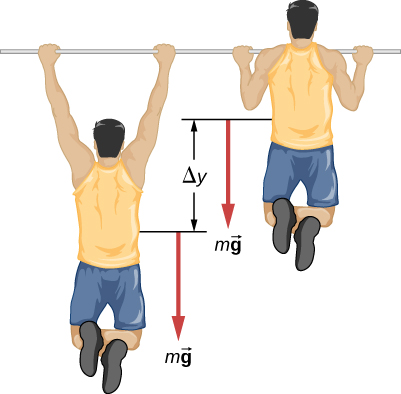| << Chapter < Page | Chapter >> Page > |
The concept of work involves force and displacement; the work-energy theorem relates the net work done on a body to the difference in its kinetic energy, calculated between two points on its trajectory. None of these quantities or relations involves time explicitly, yet we know that the time available to accomplish a particular amount of work is frequently just as important to us as the amount itself. In the chapter-opening figure, several sprinters may have achieved the same velocity at the finish, and therefore did the same amount of work, but the winner of the race did it in the least amount of time.
We express the relation between work done and the time interval involved in doing it, by introducing the concept of power. Since work can vary as a function of time, we first define average power as the work done during a time interval, divided by the interval,
Then, we can define the instantaneous power (frequently referred to as just plain power ).
Power is defined as the rate of doing work, or the limit of the average power for time intervals approaching zero,
If the power is constant over a time interval, the average power for that interval equals the instantaneous power, and the work done by the agent supplying the power is . If the power during an interval varies with time, then the work done is the time integral of the power,
The work-energy theorem relates how work can be transformed into kinetic energy. Since there are other forms of energy as well, as we discuss in the next chapter, we can also define power as the rate of transfer of energy. Work and energy are measured in units of joules, so power is measured in units of joules per second, which has been given the SI name watts, abbreviation W: . Another common unit for expressing the power capability of everyday devices is horsepower: .


Notification Switch
Would you like to follow the 'University physics volume 1' conversation and receive update notifications?